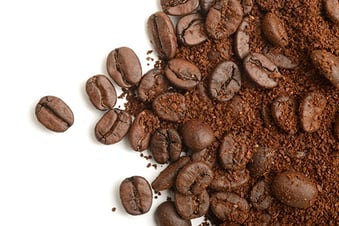 Researchers have turned coffee grounds into a spongy filter that absorbs heavy metals from water. The filter, which was described in the September 2016 issue of the American Chemical Society's journal Sustainable Chemistry and Engineering, is composed of 60 wt % of spent coffee powder and 40 wt percent of silicone elastomer using the sugar leaching technique. The researchers found that by adding sugar and silicone to the coffee, they were able to create a foamy brick that when soaked in water would leach out the sugar, leaving the coffee grounds to bind to metal in the water.
Researchers have turned coffee grounds into a spongy filter that absorbs heavy metals from water. The filter, which was described in the September 2016 issue of the American Chemical Society's journal Sustainable Chemistry and Engineering, is composed of 60 wt % of spent coffee powder and 40 wt percent of silicone elastomer using the sugar leaching technique. The researchers found that by adding sugar and silicone to the coffee, they were able to create a foamy brick that when soaked in water would leach out the sugar, leaving the coffee grounds to bind to metal in the water.
In the study, researchers used 200-mg piece of foam to remove 99 percent of lead and mercury within 30 hours from still water. In moving water with a concentration of metal ions that was greater than 200 parts per billion, the foam was able to remove 50-60 percent of the lead ions, which is equal to most commercially available filters.
The world produces more than six million tons of spent coffee grounds every year. The grounds have chemicals, including fatty acids, lignin, cellulose and polyphenols that naturally absorb heavy metal ions.
Mechanical engineer Constantine Megaridis of the University of Chicago said, “Millions of tons of spent coffee wind up in landfills every year, so the proposed method not only reduces the solid waste stream but removes dangerous heavy metal pollutants from water.”
From the abstract published in Sustainable Chemistry and Engineering, “The incorporation of the spent coffee powder in a solid porous support, without compromising its functionality, facilitates the handling and allows the accumulation of the pollutants into the foams enabling their safe disposal. The fabricated foams can be used for the continuous filtration and removal of metal ions from water, demonstrating their versatility, in contrast to the sole coffee powder utilized so far, opening the way for the reutilization and valorization of this particular waste.
A recent technical note published by Teledyne Leeman Labs describes the analysis of ground coffee for mercury concentration using the company’s Hydra IIc Mercury Analyzer and a moisture control system as described in Application Note – AN1701 to enhance the performance of the analyzer in standard direct combustion mode. In this mode, sample pretreatment and waste generation associated with wet chemistry are eliminated. The samples were introduced into the analyzer using an automated sequence and the unattended analysis of each individual sample was completed in ~6.5 minutes.
Direct analysis of mercury content by Thermal Decomposition is described in methods USEPA 7623, 7473 and ASTM 6722.
For additional details about the instrumentation, method parameters, calibration, procedure and results, download the technical note from TeledyneLeemanLabs.com.
With the addition of the moisture control system, the Hydra IIC in standard mode is an ideal system for determining the levels of mercury concentration in ground coffee.
